 "SteveLehto" (stevelehto)
"SteveLehto" (stevelehto)
08/22/2015 at 09:20 • Filed to: None
 25
25
 82
82
 "SteveLehto" (stevelehto)
"SteveLehto" (stevelehto)
08/22/2015 at 09:20 • Filed to: None |  25 25
|  82 82 |
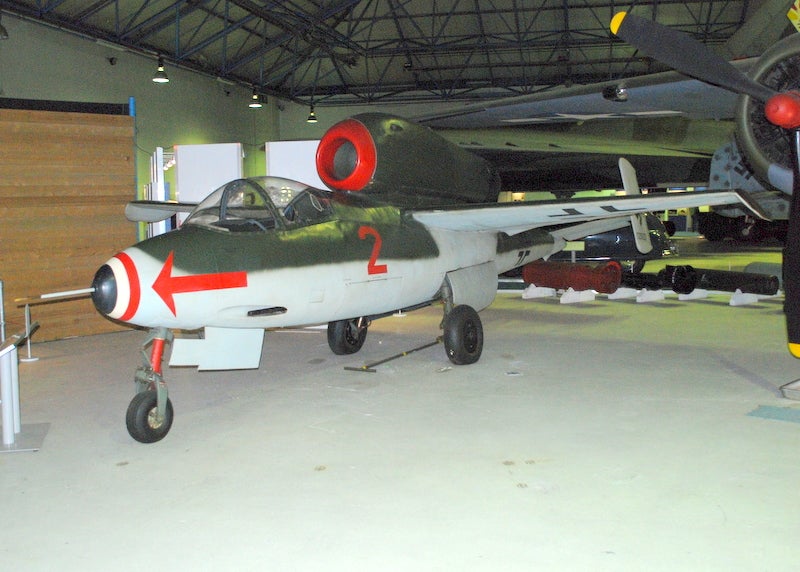
In the closing days of World War II, the Germans were running out of war materiel. But they had some very advanced technology they wanted to use. So, they came up with some interesting things like the He-162. The People’s Fighter, it was a jet with a goodly portion built from wood.

The !!!error: Indecipherable SUB-paragraph formatting!!! in London has a wonderful assortment of aircraft from all over the world - spanning the entire history of flight - and the Second World War is well represented. Among the craft you will see in one hall is this little fellow. The He-162. The Germans wanted to capitalize on their jet technology (like in the Me-262, one of which is also displayed in this museum) but with a design that would be easier and cheaper to build. Especially since everything was in short supply in 1945.
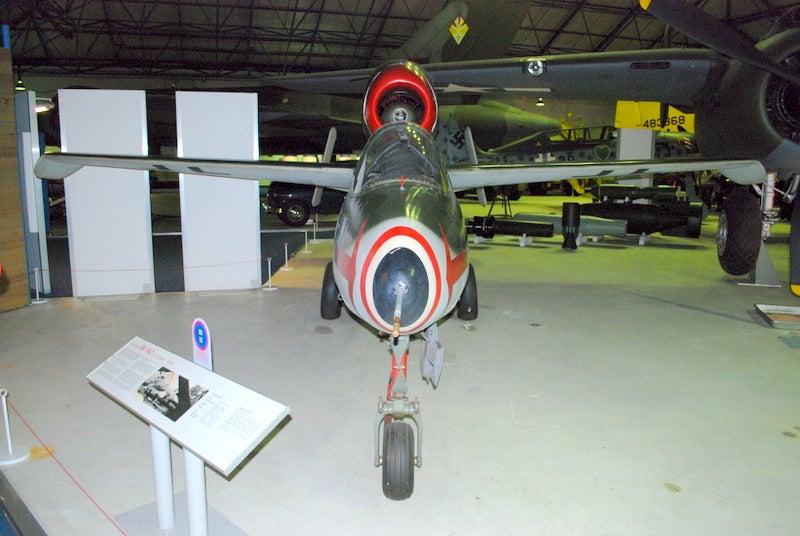
The high command asked the aircraft industry for bids and this is the one they chose. The design called for 1/3 of the craft - by weight - to be made from wood. You know: the stuff that comes from trees. The bulk of that is inside the plane, the ribs of the fuselage and so on.
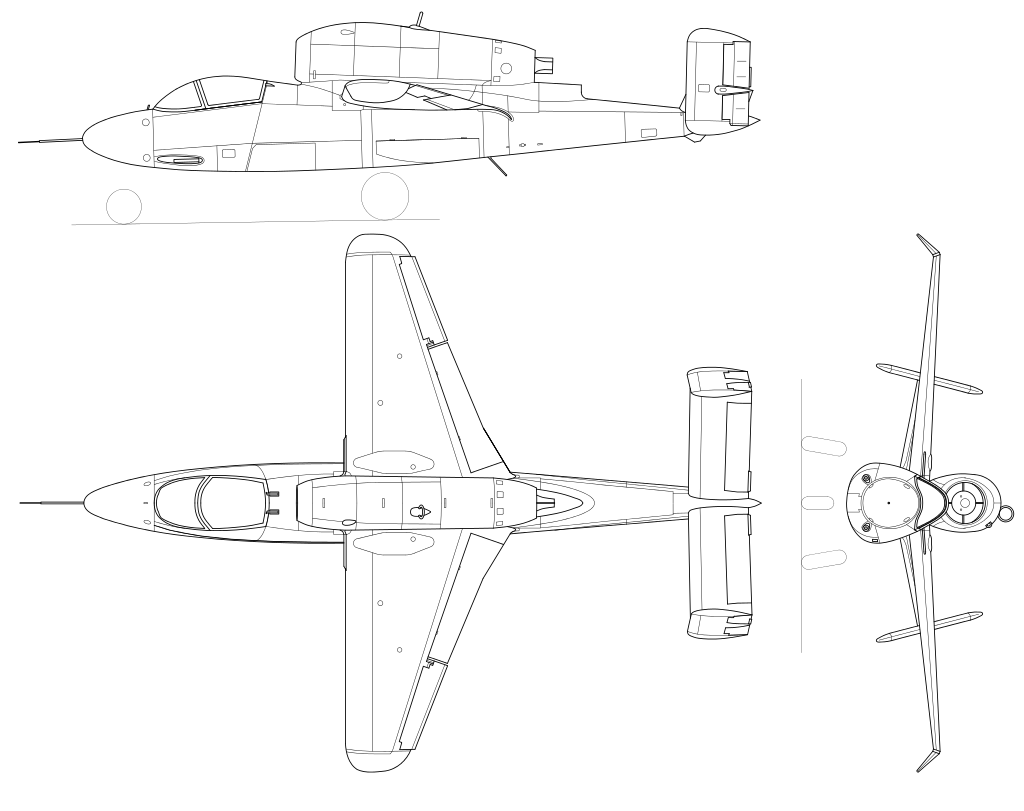
It was said that the first flight of an He-162 took place less than 70 days from the start of its design. In February 1945, units were shipped to the Luftwaffe and a few of them saw combat. Records suggest they may have scored two victories. In all, about 300 or so were built.
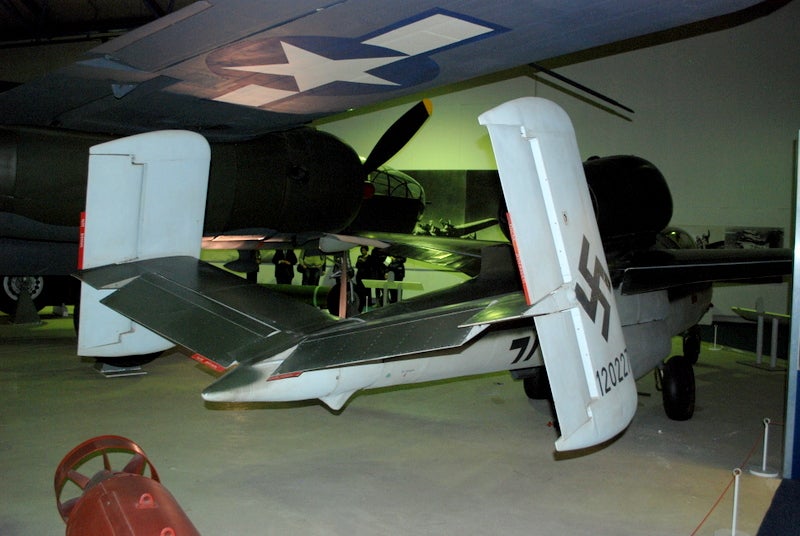
But the planes exhibited “unpleasant flying characteristics,” according to the museum signage. When it was flying properly, it could manage 520 MPH with its single 1,760lb thrust BMW 003 turboject engine. It packed two 20 MM cannon just in case it did get something in its sights and an ejector seat, in case it got in someone else’s. The seat is missing from this example, however.
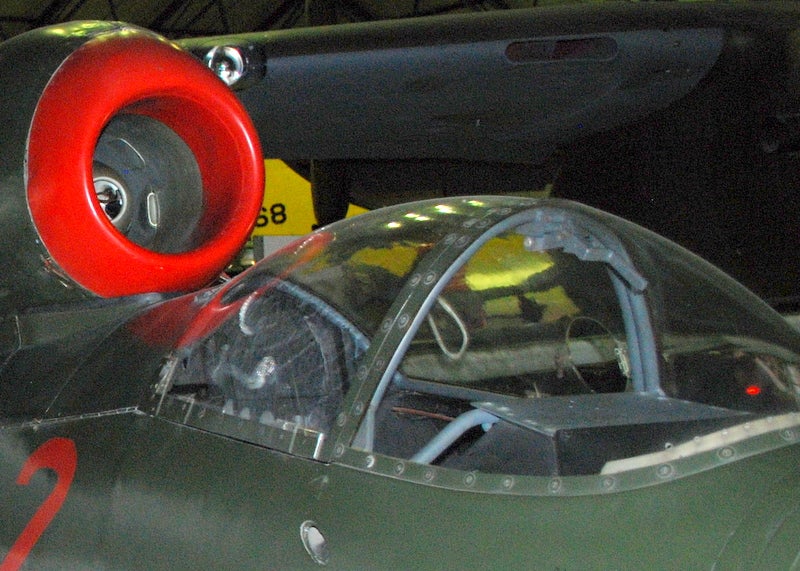
And even though they were not known as the most pilot-friendly craft ever built, this example flew 26 sorties and had a cumulative flight time of almost 12 hours before it was captured and brought to England. If you are ever in England, I’d highly recommend a visit to this museum. This is just one of the many unusual aircraft they have on display.
Follow me on Twitter: !!!error: Indecipherable SUB-paragraph formatting!!!
Hear my podcast on iTunes: !!!error: Indecipherable SUB-paragraph formatting!!!
Steve Lehto has been practicing law for 23 years, almost exclusively in consumer protection and !!!error: Indecipherable SUB-paragraph formatting!!! He wrote !!!error: Indecipherable SUB-paragraph formatting!!! and !!!error: Indecipherable SUB-paragraph formatting!!! .
This website may supply general information about the law but it is for informational purposes only. This does not create an attorney-client relationship and is not meant to constitute legal advice, so the good news is we’re not billing you by the hour for reading this. The bad news is that you shouldn’t act upon any of the information without consulting a qualified professional attorney who will, probably, bill you by the hour.
Schematic: “He-162” by Kaboldy - Own work. Licensed under CC BY-SA 3.0 via Commons -
!!!error: Indecipherable SUB-paragraph formatting!!!
 DoYouEvenShift
> SteveLehto
DoYouEvenShift
> SteveLehto
08/22/2015 at 09:45 |
|
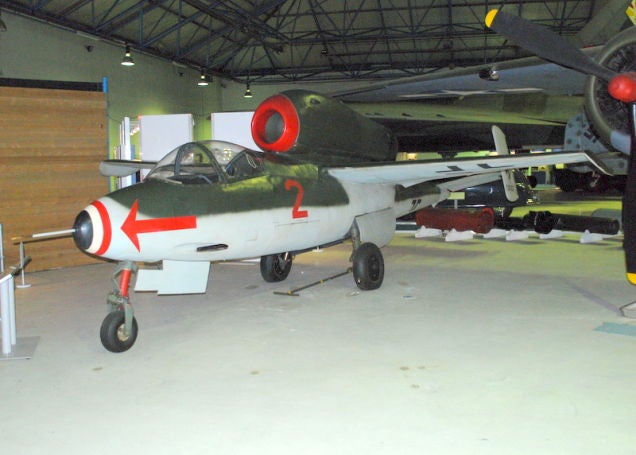
Very clever Germany.
Aircraft flies in the direction the red arrow points.
 X37.9XXS
> SteveLehto
X37.9XXS
> SteveLehto
08/22/2015 at 09:48 |
|
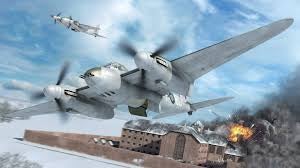
The British actually did it first
.
.
.
One of the finest bomber/fighter/recce/special mission aircraft ever built
The aircraft’s exploits are legendary, real James Bond stuff. They even pulled a prison break. It also may have been the very first stealth aircraft
https://en.wikipedia.org/wiki/De_Havill…
It even has a book series, wriiten by Frederick Smith
http://www.amazon.com/Frederick-E.-S…
 SteveLehto
> X37.9XXS
SteveLehto
> X37.9XXS
08/22/2015 at 09:49 |
|
Did WHAT first?
 X37.9XXS
> SteveLehto
X37.9XXS
> SteveLehto
08/22/2015 at 09:50 |
|
Built a first line WWII fighter out of wood
 SteveLehto
> X37.9XXS
SteveLehto
> X37.9XXS
08/22/2015 at 09:52 |
|
Oh. The point here is that few people would think of jet propulsion and wood and say, “Sounds like a great idea!”
I’ve read about the Mosquitos before. Very cool.
 TwinCharged - Is Now UK Opponaut
> SteveLehto
TwinCharged - Is Now UK Opponaut
> SteveLehto
08/22/2015 at 10:17 |
|
As you said, because this was built in the waning days of the war, the plane was called the Volksjäger, meaning people’s plane as it was intended that anybody who could fly would fly it. I believe there were several variants planned for the He-162, including a forward swept wing version and once powered by ramjets/rockets.
 SteveLehto
> TwinCharged - Is Now UK Opponaut
SteveLehto
> TwinCharged - Is Now UK Opponaut
08/22/2015 at 10:23 |
|
I seem to recall seeing a mockup of one with the pulse-jet engines from the V-1 missiles. Talk about low-tech!
 ly2v8-Brian
> SteveLehto
ly2v8-Brian
> SteveLehto
08/22/2015 at 10:29 |
|
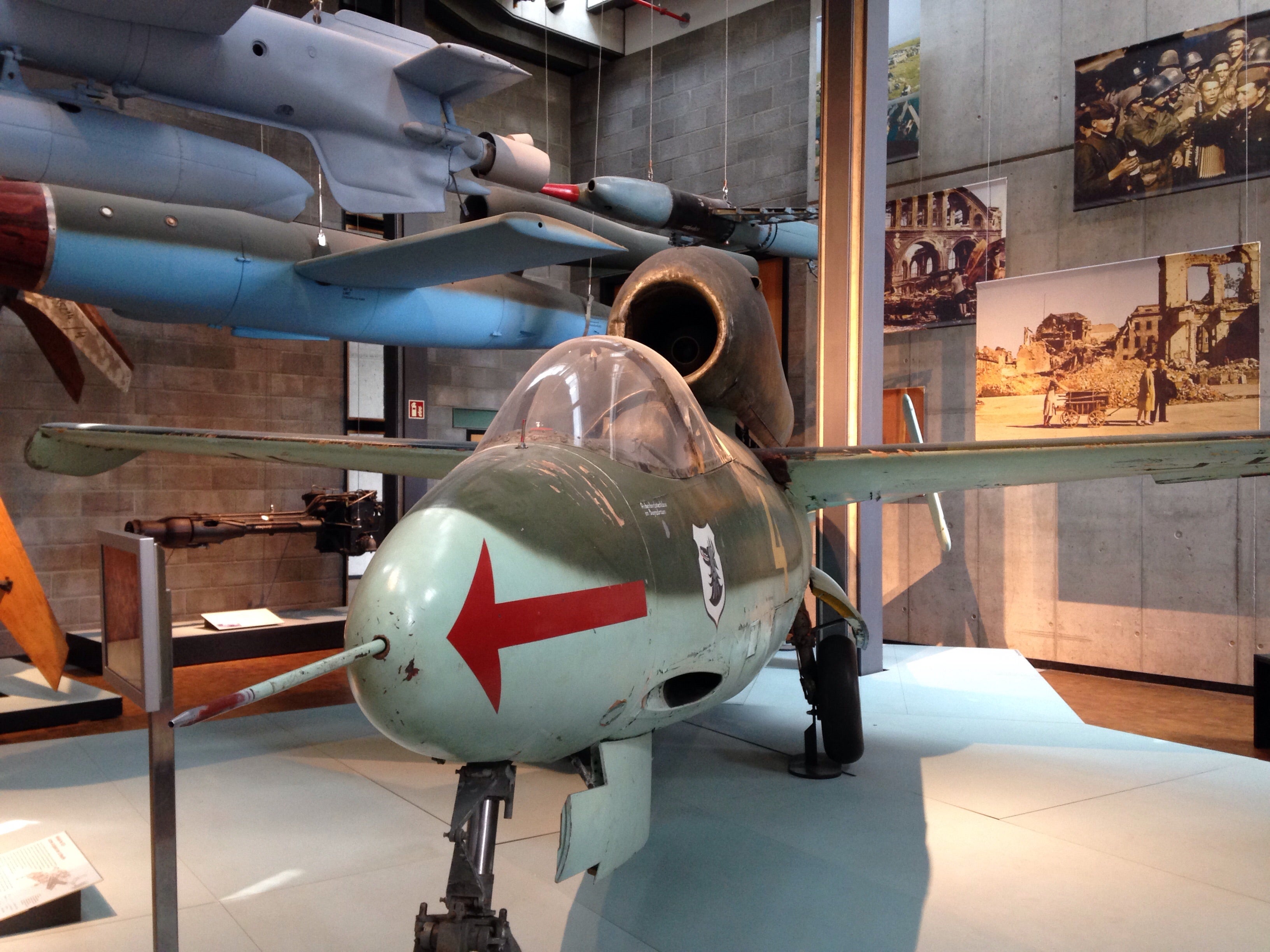
Why yes I have. I saw this one in Berlin, and yes that is a V1 hanging behind it. This museum also had a Horten flying wing prototype.
 Jake - Has Bad Luck So You Don't Have To
> SteveLehto
Jake - Has Bad Luck So You Don't Have To
> SteveLehto
08/22/2015 at 10:40 |
|
Saw one of these in a museum in California and instantly fell in love. This is one of the quirkies aircraft designs I’ve ever seen. V-tail with vertical stabilisers? Tumor engine? stubby wings? count me in.
 SteveLehto
> Jake - Has Bad Luck So You Don't Have To
SteveLehto
> Jake - Has Bad Luck So You Don't Have To
08/22/2015 at 10:52 |
|
Which museum, do you know? I saw some cool ones at the Chino air museum but don’t remember if they had one of these or not.
 Jake - Has Bad Luck So You Don't Have To
> SteveLehto
Jake - Has Bad Luck So You Don't Have To
> SteveLehto
08/22/2015 at 10:57 |
|
Yep, that’s the one. Planes of Fame, I believe it’s also called. Also saw some sort of small flying wing aircraft go out on a flight, which was pretty magnificent.
 TwinCharged - Is Now UK Opponaut
> SteveLehto
TwinCharged - Is Now UK Opponaut
> SteveLehto
08/22/2015 at 11:10 |
|
Ah yes that was it, pulse-jets. Cheap and cheerful. Makes sense since the He-162 was made in the same factory as the V-bombs.
 facw
> SteveLehto
facw
> SteveLehto
08/22/2015 at 14:23 |
|
Saw this one at the Imperial War Museum in London (though don’t know if it is still there after their terrible and unnecessary renovation):
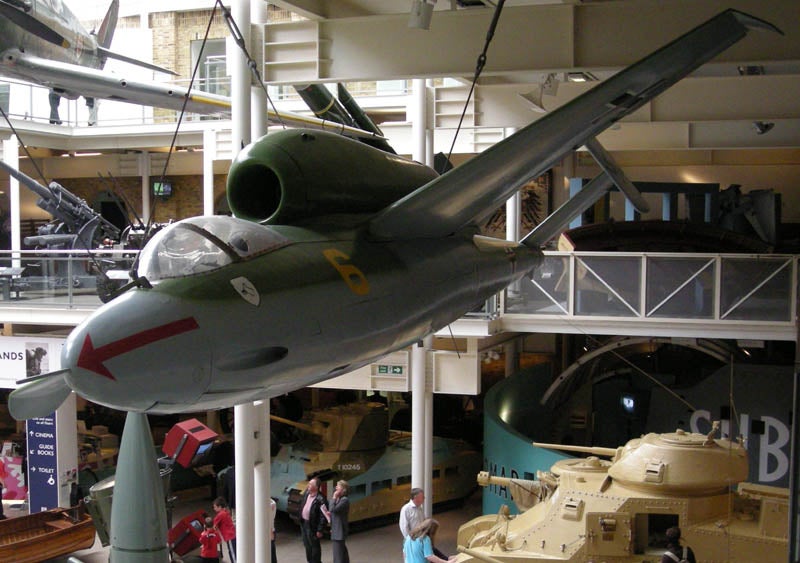
 Josh Brinzo
> SteveLehto
Josh Brinzo
> SteveLehto
08/23/2015 at 10:50 |
|
Saw that exact one on my trip to London a few months ago. I had been wanting to see one for a while. It’s such a unique and interesting plane!
 JayHova
> X37.9XXS
JayHova
> X37.9XXS
08/23/2015 at 10:56 |
|
The whole first world war was fought with wooden planes and there were plenty of wood-framed planes used in WW2.....the real question is: which plane was the
LAST
to be built from wood.
 ThatbastardKurtis
> X37.9XXS
ThatbastardKurtis
> X37.9XXS
08/23/2015 at 10:58 |
|
The question was “jet”.
Also the Horton Ho 229 (flying wing) was partially made out of wood, and has been considered the first stealth jet/bomber
https://en.m.wikipedia.org/wiki/Horten_Ho…
 BicycleBob30
> SteveLehto
BicycleBob30
> SteveLehto
08/23/2015 at 11:01 |
|
A lot of early jets in the UK were at least partly wood. The DeHavilland DH100 ‘Vampire’ was the best known and hugely successful in the early Cold War period. About 3000 were built. Dehavilland used what they had learnt from the Mosquito in designing the airframe.
And yes, the Mosquito was amazingly cool. DH built prototypes without a War Office brief, or even a complete idea of what its role was going to be. He wanted to built the lightest airframe that could carry two Merlin engines and he realized that Britain’s piano and furniture factories weren’t doing much for the War Effort .He designed an airframe entirely out of wood - mostly plywood that was made in two halves in a pair of concrete moulds forming a stressed skin - that could be made in cabinet making workshops. The resulting plane was way faster than anything else the allies had at the time and ended up in night bomber, reconnaissance, ambush and a whole load of other roles that were dreamed up when the top brass realized what it could do.
 JayHova
> SteveLehto
JayHova
> SteveLehto
08/23/2015 at 11:21 |
|
Yes, I have....the De Havilland Vampire.
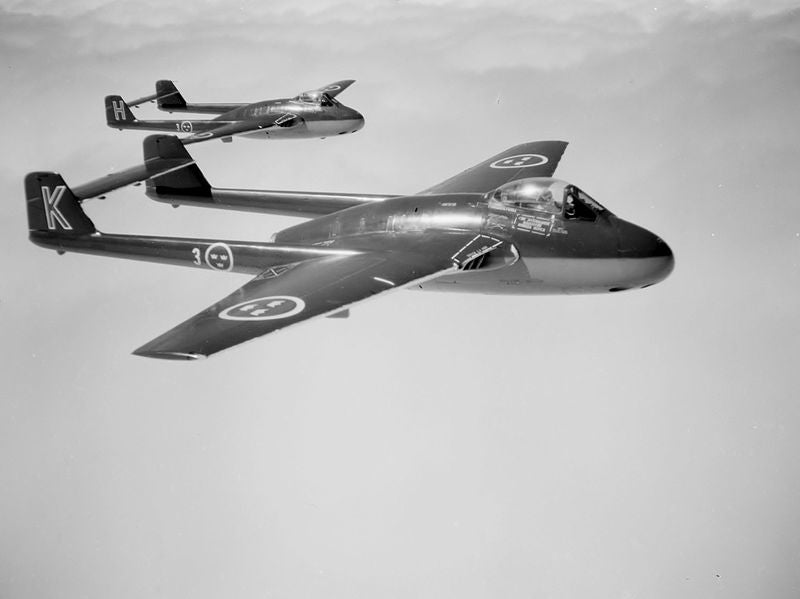
There were also at least two german rocket planes partly made of wood:
The Messerschmitt Me 163 Komet (which was operationally used)
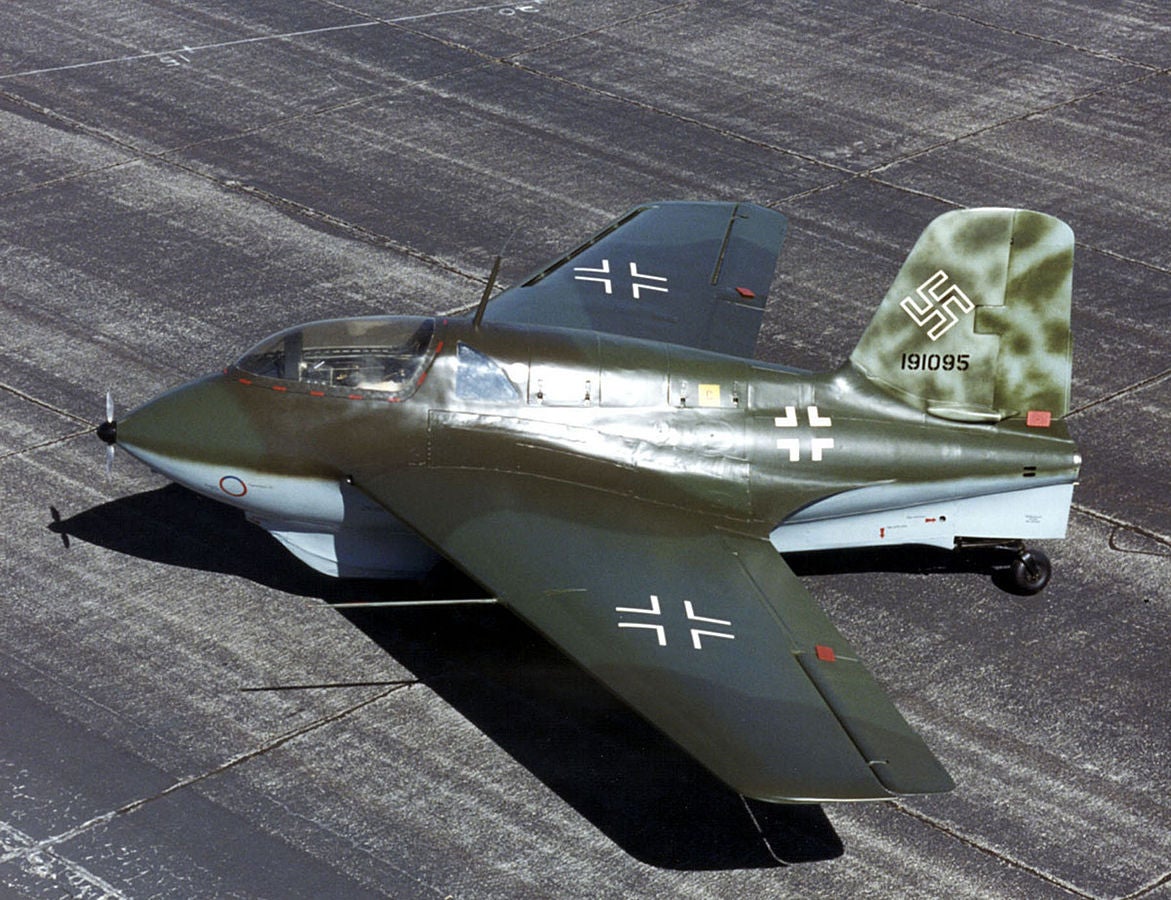
and the Bachem Ba 349 Natter (which flew once or twice)
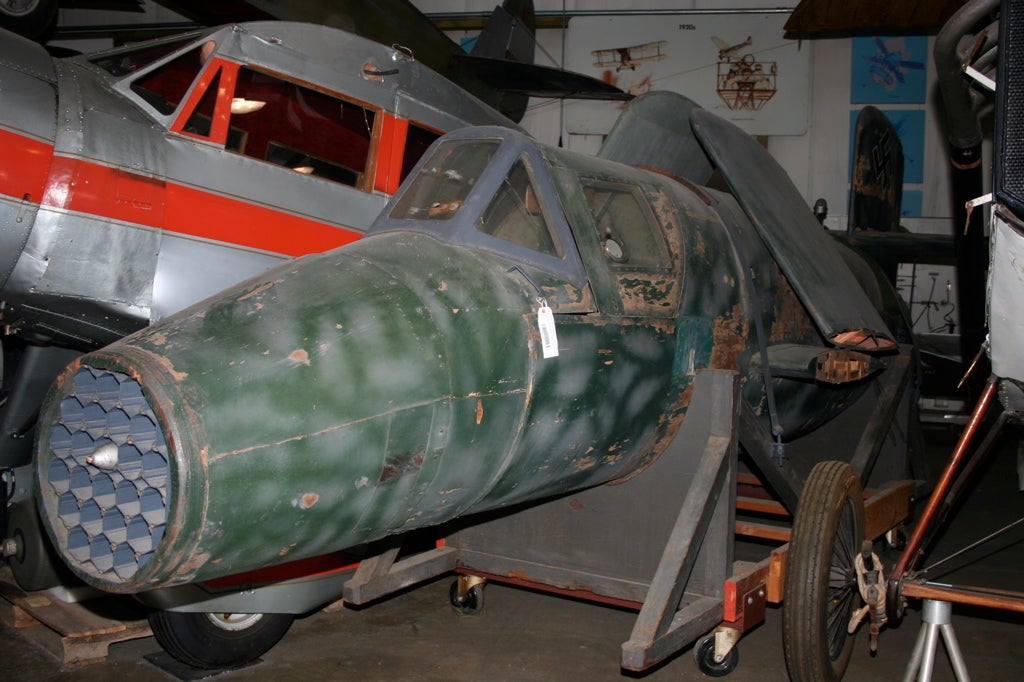
 LongbowMkII
> SteveLehto
LongbowMkII
> SteveLehto
08/23/2015 at 11:22 |
|
I think the fuselage is a very simple sleek and pretty design. Looks modern even.
 Dr. Strangegun
> TwinCharged - Is Now UK Opponaut
Dr. Strangegun
> TwinCharged - Is Now UK Opponaut
08/23/2015 at 11:23 |
|
Cheap and cheerful indeed. Scene from an He-162 plusejet flight test: Plane shuts off and coasts to the parking area. Staff comes up to the aircraft and sets the ladder, canopy opens, and an officer starts assisting the pilot in his exit.
“WHAT?”
“Sir, we need to start your flight report.”
“WHAT? I CAN’T HEAR YOU”
 Nasal Radiator
> SteveLehto
Nasal Radiator
> SteveLehto
08/23/2015 at 11:39 |
|
The DeHaviland Vampire is also made of wood. I've seen one race at Reno 2010-2011 ish
 PeteRR
> X37.9XXS
PeteRR
> X37.9XXS
08/23/2015 at 11:42 |
|
I wouldn’t call the Mosquito a front line fighter. The ME-110 could knock them down.
 Orbiter
> SteveLehto
Orbiter
> SteveLehto
08/23/2015 at 11:48 |
|
Some of the best fighters of the war have large sections made from wood. The yak-3 and yak-9 are as good or better than any other allied aircraft, and made largely from plywood.
 SteveLehto
> Nasal Radiator
SteveLehto
> Nasal Radiator
08/23/2015 at 11:48 |
|
I’ve never seen one, which I admit is sad.
I’ll keep my eye out for one as I do the rounds of air museums.
 SteveLehto
> Orbiter
SteveLehto
> Orbiter
08/23/2015 at 11:53 |
|
Yes, but those are prop planes. I also seem to recall that the Me-109 pilots loved shooting them up on the Eastern Front.
 Hahayoustupidludditeshutupandgohandcrankyourmodeltalready
> SteveLehto
Hahayoustupidludditeshutupandgohandcrankyourmodeltalready
> SteveLehto
08/23/2015 at 11:55 |
|
There’s one of these at the Canadian Air and Space Museum in Toronto. Very interesting—and sad, for a variety of reasons—to see.
 Forgetnomore
> SteveLehto
Forgetnomore
> SteveLehto
08/23/2015 at 11:56 |
|
Steve Lehto joins Planelopnik please?
 CrowPal
> SteveLehto
CrowPal
> SteveLehto
08/23/2015 at 11:57 |
|
Why, yes.
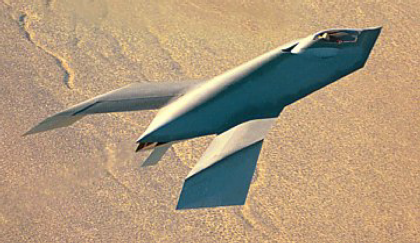
The Boeing Bird of Prey is made of continuous composite pieces over a plywood form.
 SteveLehto
> Forgetnomore
SteveLehto
> Forgetnomore
08/23/2015 at 11:58 |
|
Is there such a thing? I thought it was mythical, like Catlopnik and Junklopnik.
 SteveLehto
> CrowPal
SteveLehto
> CrowPal
08/23/2015 at 11:58 |
|
Some things never go out of style!
 Whitesmoke
> SteveLehto
Whitesmoke
> SteveLehto
08/23/2015 at 12:10 |
|
Very cool article, Steve. On a totally unrelated note, I repair some very old machines that use wooden instead of aluminum drive pullies “for added quietness of operation”. There is a checklist we have to complete before they go out the door for inspections, adjustments and repairs performed. I modified the checklist to include “Inspect drive pullies for termites”. For some unknown reason, management was quite unamused and made me remove it.
 leshnah
> facw
leshnah
> facw
08/23/2015 at 12:11 |
|
It’s not there. Now there’s a Spitfire and a Harrier. I liked the WWI exhibit there.
 Bandido Andrew
> SteveLehto
Bandido Andrew
> SteveLehto
08/23/2015 at 12:11 |
|
Great post Steve!
 Someone Else's Projects
> SteveLehto
Someone Else's Projects
> SteveLehto
08/23/2015 at 12:14 |
|
I remember reading the phrase “shaken apart” in relation to those pulse-jet experiments. Not sure if it was in relation to the airframe or the pilot.
 ExGavalonnj
> SteveLehto
ExGavalonnj
> SteveLehto
08/23/2015 at 12:14 |
|
It’s wings were glued together and often fell apart. You left that part out
 mallthus
> JayHova
mallthus
> JayHova
08/23/2015 at 12:17 |
|
Nice job finding a picture of a Swedish example of a British plane (Vampire).
 Forgetnomore
> SteveLehto
Forgetnomore
> SteveLehto
08/23/2015 at 12:19 |
|
Well I’ll guess we’ll stick you with Flightclub but it could turn out magical, like Foxtrot Alpha.
 SteveLehto
> Someone Else's Projects
SteveLehto
> Someone Else's Projects
08/23/2015 at 12:22 |
|
Probably both. Although the pilot would be deaf long before. Those things were LOUD.
 SteveLehto
> ExGavalonnj
SteveLehto
> ExGavalonnj
08/23/2015 at 12:22 |
|
Well, the early ones, yes. Later they made improvements in the glue.
Yes, glue.
 facw
> leshnah
facw
> leshnah
08/23/2015 at 12:35 |
|
Yeah, I expected that, going from this:
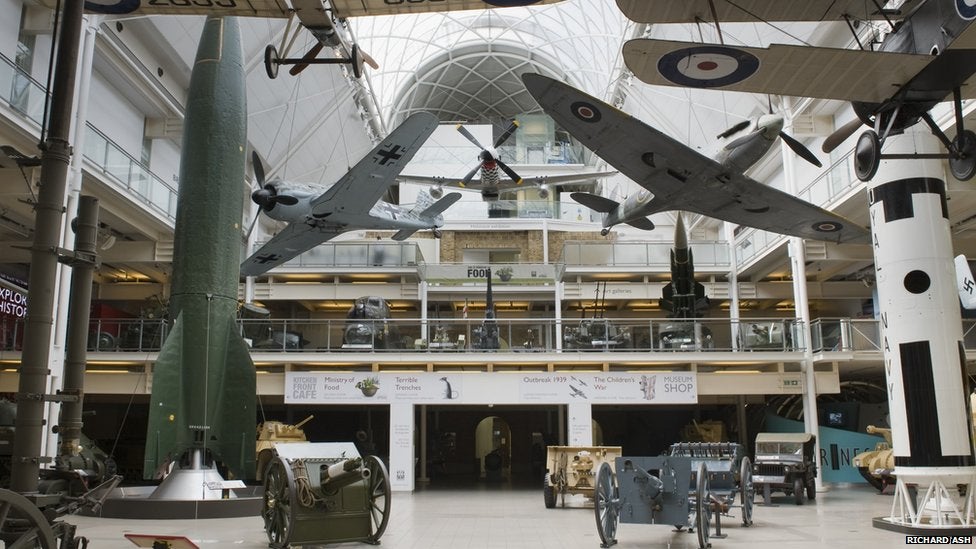
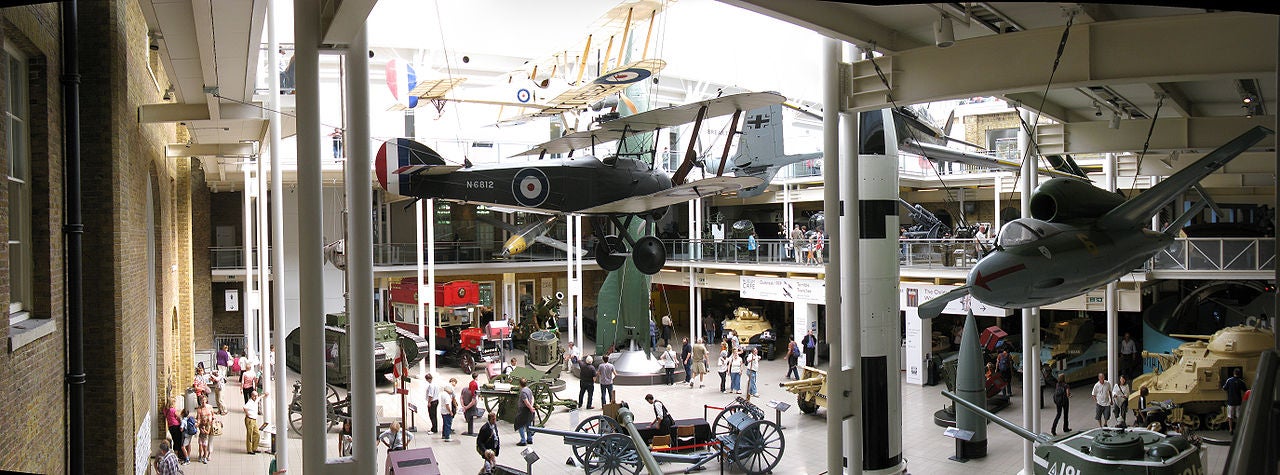
To this:
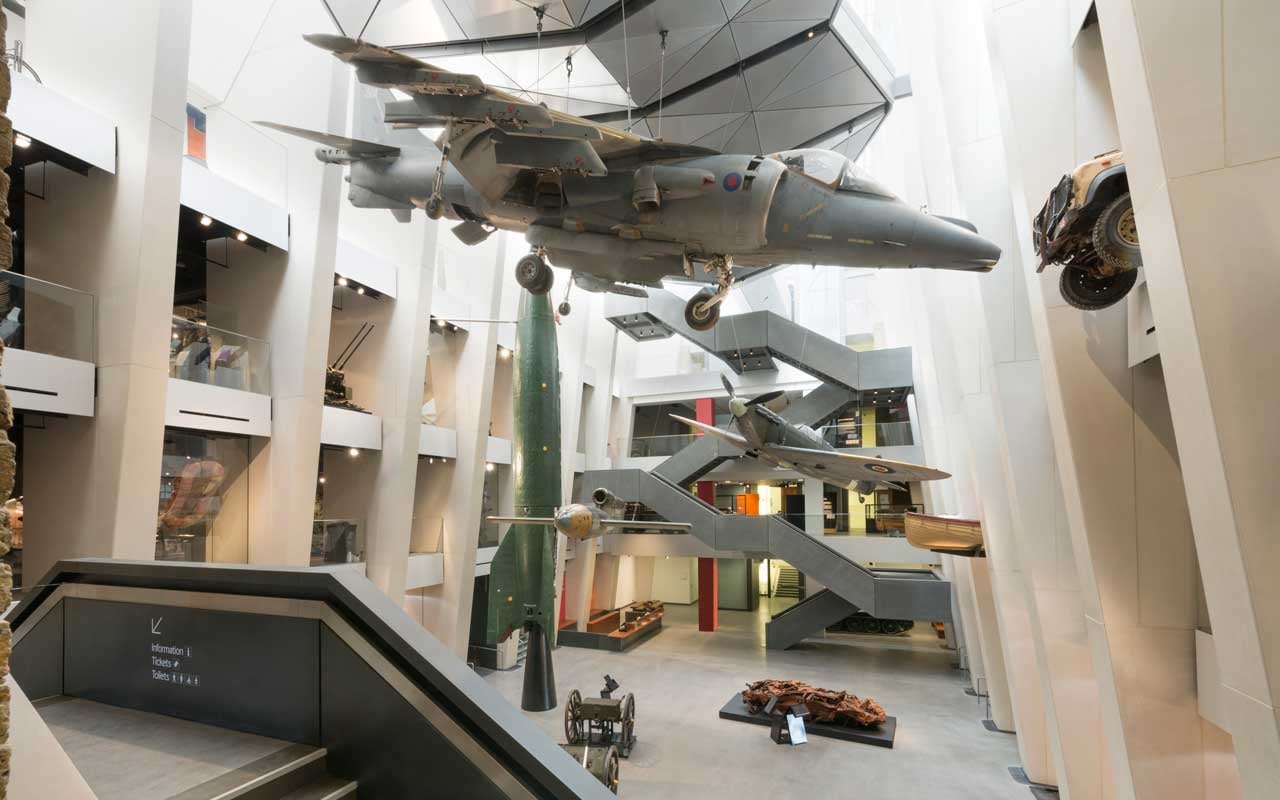
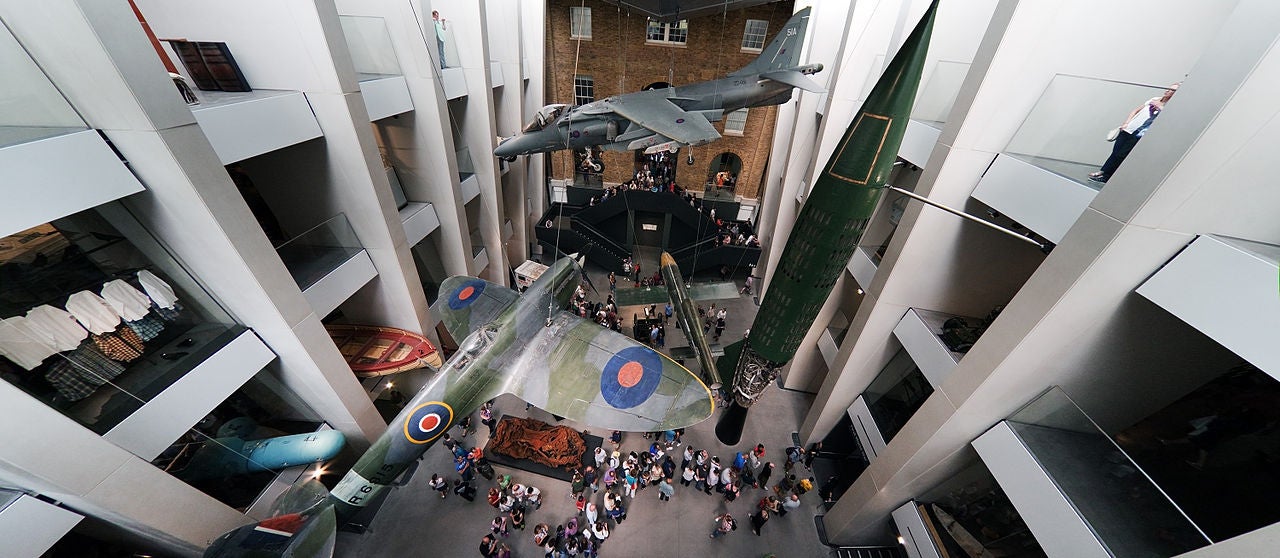
Seems like a pretty major downgrade in terms of being able to display large items.
The video of them moving stuff out is pretty cool though, count me as surprised that the tank destroyer was still able to roll on its treads:
 Turbineguy: Nom de Zoom
> DoYouEvenShift
Turbineguy: Nom de Zoom
> DoYouEvenShift
08/23/2015 at 12:40 |
|
Works for bombers too as a navigation aid.
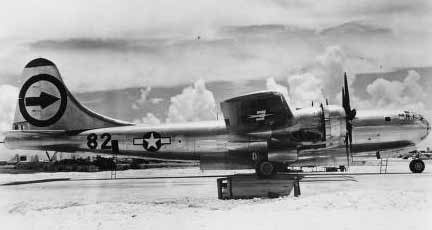
 wlb50
> SteveLehto
wlb50
> SteveLehto
08/23/2015 at 12:41 |
|
I believe the twin engined Me-262 had some plywood in it, too. The engines had only a TBO (Time Between Overhauls) of 8 hours. Because of the poor metal.
 sadfasdf
> DoYouEvenShift
sadfasdf
> DoYouEvenShift
08/23/2015 at 12:45 |
|
CANT UNSEE
 SteveLehto
> wlb50
SteveLehto
> wlb50
08/23/2015 at 12:54 |
|
I’ve never heard that (about the wood). But as for the engines, yes. The exotics necessary for the internal parts were in quite short supply in the latter half of the war.
 IGetPwnedOften
> JayHova
IGetPwnedOften
> JayHova
08/23/2015 at 12:55 |
|
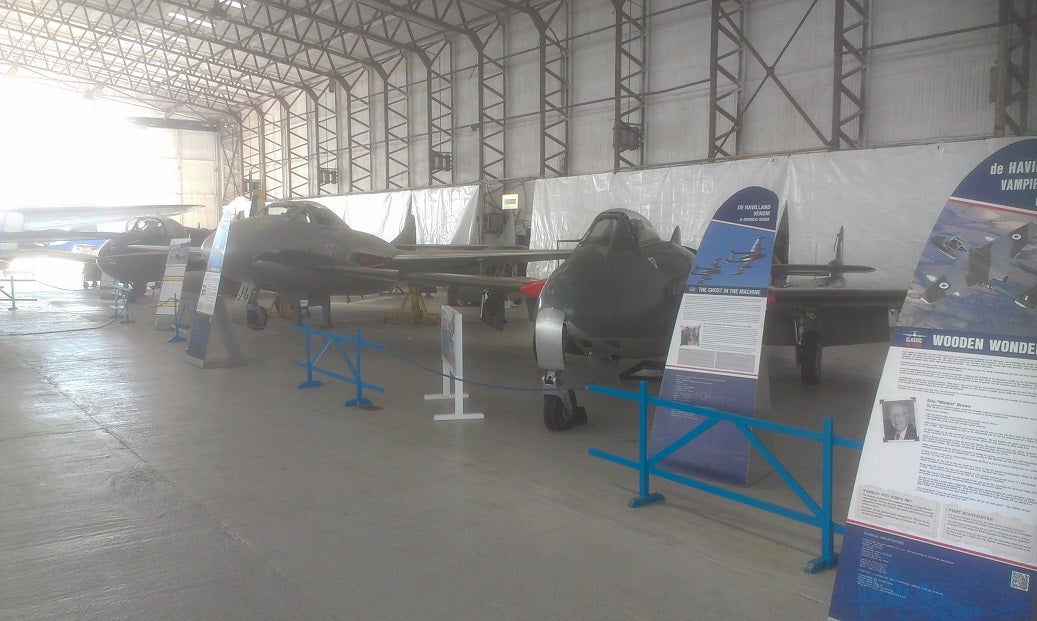
Came here to mention the Vampire, and of course its little cousin, the Venom...
This is a fairly crappy picture I took recently. I was working on a short film and the set was the museum at Coventry Airport. Because it was a set I couldn’t take my camera so I had to use my phone, but here it is anyway.
 jerrythejourno
> SteveLehto
jerrythejourno
> SteveLehto
08/23/2015 at 13:12 |
|
The Japanese outdid the Germans, building a jet with fabric covered wings. There’s one at the National Air & Space museum’s Udvar-Hazy Center.
 phuzz
> ly2v8-Brian
phuzz
> ly2v8-Brian
08/23/2015 at 13:23 |
|
When I think of a wooden jet aircraft I think Horton Ho 229
 JayHova
> mallthus
JayHova
> mallthus
08/23/2015 at 13:28 |
|
Those were kind of a export hit and I found the Tre Kroner were a neat touch.
 Sergio526
> SteveLehto
Sergio526
> SteveLehto
08/23/2015 at 13:39 |
|

I’ll just leave this here...
 RidgeR5
> JayHova
RidgeR5
> JayHova
08/23/2015 at 14:47 |
|
The Natter flew once, and promptly broke up in flight and killed it’s pilot. Goering cancelled the project after that.
 il buono
> SteveLehto
il buono
> SteveLehto
08/23/2015 at 14:55 |
|
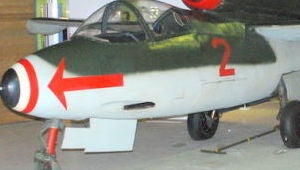
I seriously thought this arrow was added in by Steve to point out something important. Gosh I’m an idiot.
 SteveLehto
> il buono
SteveLehto
> il buono
08/23/2015 at 14:56 |
|
“Note the front end, which is pointy.”
 ccc40821
> jerrythejourno
ccc40821
> jerrythejourno
08/23/2015 at 15:01 |
|
Never heard of it. Which one was that?
 ccc40821
> X37.9XXS
ccc40821
> X37.9XXS
08/23/2015 at 15:07 |
|
Despite it’s wooden construction, it was not a stealthy plane. When flying across The North Sea for two famous raids on Gestapo headquarters in Denmark, the planes had to fly at wavetop height to avoid being detected by German radar. The pilots later told about the front windows being useless, because of sea spray....
 ccc40821
> wlb50
ccc40821
> wlb50
08/23/2015 at 15:10 |
|
Only the underwing racks for air-to-air rockets.
 JayHova
> RidgeR5
JayHova
> RidgeR5
08/23/2015 at 16:18 |
|
Yep, it flew once under its own power, but a few more times being towed.
 facw
> ccc40821
facw
> ccc40821
08/23/2015 at 17:25 |
|
Beats me, the Smithsonian has the Nakajima Kikka:
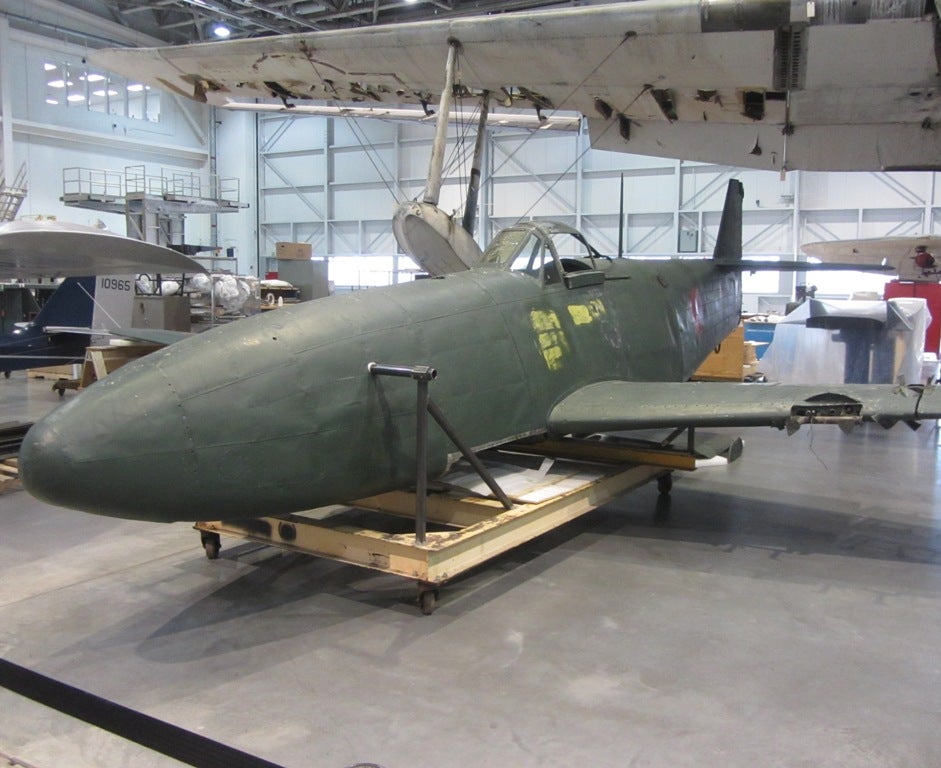
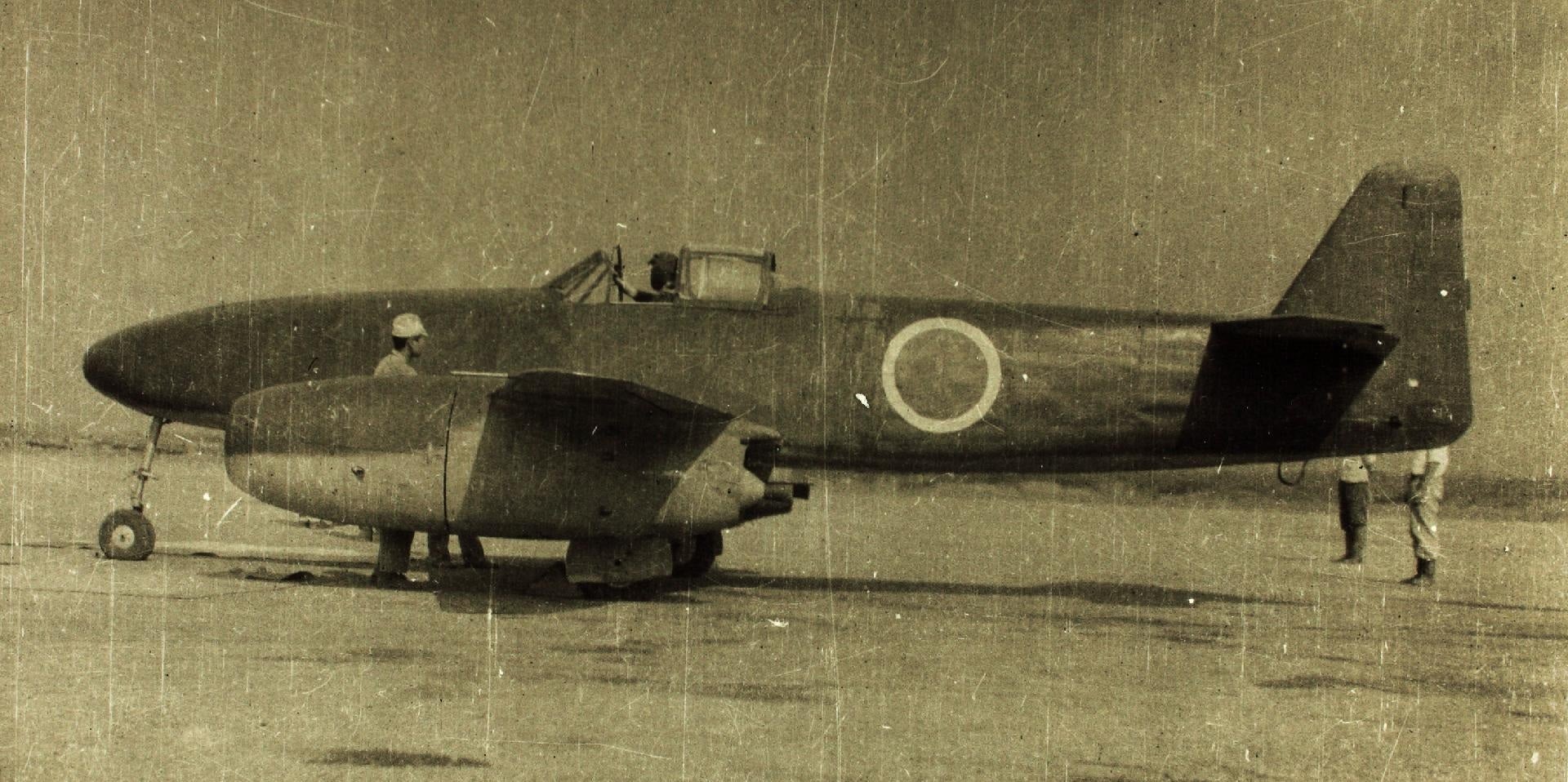
But it is all metal, except for fabric-covered wood frame control surfaces. I guess you could see that and confuse it for the whole wing structure?
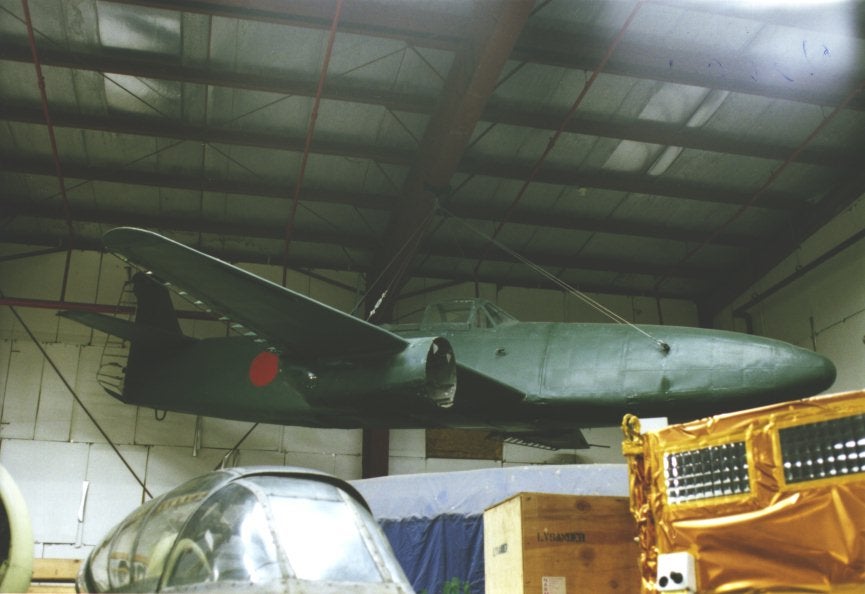
 Hot Takes Salesman
> SteveLehto
Hot Takes Salesman
> SteveLehto
08/23/2015 at 18:32 |
|
And apparently they are restoring the world’s only surviving Dornier Do 17.
 Jwend392
> X37.9XXS
Jwend392
> X37.9XXS
08/23/2015 at 18:40 |
|
And the star of 633 Squadron , the movie that was rocking the Trench Run years before George Lucas made it cool.
Fun fact: One of the Mosquitoes used in the filming of 633 Squadron is at the EAA AirVenture Museum in Oshkosh, WI.
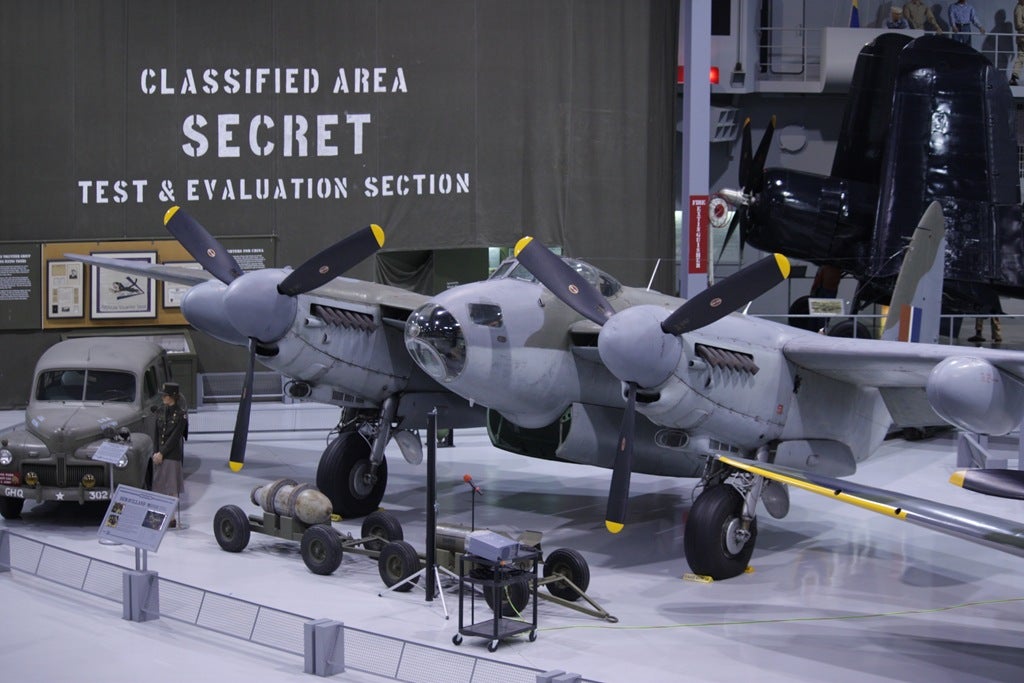
 LamboLover8
> LongbowMkII
LamboLover8
> LongbowMkII
08/23/2015 at 21:28 |
|
Because I’m sure there wasn’t even a basic understanding of aerodynamics in the 40’s. *Facepalm*
 TheVancen- In Pursuit of a Greater Payday and Car Parts
> Hahayoustupidludditeshutupandgohandcrankyourmodeltalready
TheVancen- In Pursuit of a Greater Payday and Car Parts
> Hahayoustupidludditeshutupandgohandcrankyourmodeltalready
08/23/2015 at 21:52 |
|
Especially since they lost the lease on the building and all the stuff is in storage.
 InFierority Complex
> X37.9XXS
InFierority Complex
> X37.9XXS
08/23/2015 at 23:11 |
|
The Soviet fighters from Lavochkin were partially made from wood as well. The tails and wings were all wood to attempt to save weight.
 Ghoulardi
> SteveLehto
Ghoulardi
> SteveLehto
08/23/2015 at 23:27 |
|
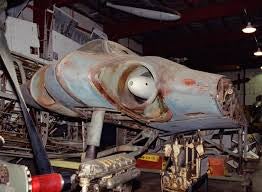
The Horten HO 229 had wooden wings. It was designed before the HE 162 but lack of engine availability meant it didn’t get a test flight until February 1945, about two months after the HE 162. The only surviving example is being restored at the Udvar-Hazy wing of the Smithsonian.
 RadioRadio
> Whitesmoke
RadioRadio
> Whitesmoke
08/23/2015 at 23:59 |
|
Joke’s on them when the termites get there.
 66ChevelleSS
> SteveLehto
66ChevelleSS
> SteveLehto
08/24/2015 at 01:50 |
|
Wood — the original carbon fiber.
 T-800
> Jake - Has Bad Luck So You Don't Have To
T-800
> Jake - Has Bad Luck So You Don't Have To
08/24/2015 at 02:03 |
|
That flying wing you saw was the Northup N-9M, I had the pleasure of seeing it fly to a small local air show where I live, and then fly out back to chino at the end.
 Fuel_of_Satan
> X37.9XXS
Fuel_of_Satan
> X37.9XXS
08/24/2015 at 04:44 |
|
Pretty much all the early aircraft were wood and fabric though. This was about jets. But the Brits did get there first as well. It was even DeHavilland who did it.
 Hahayoustupidludditeshutupandgohandcrankyourmodeltalready
> TheVancen- In Pursuit of a Greater Payday and Car Parts
Hahayoustupidludditeshutupandgohandcrankyourmodeltalready
> TheVancen- In Pursuit of a Greater Payday and Car Parts
08/24/2015 at 08:36 |
|
Sorry, I meant Ottawa, not Toronto.
 X37.9XXS
> PeteRR
X37.9XXS
> PeteRR
08/24/2015 at 08:37 |
|
The Bf 110 could not catch them, and definitely could not out-maneuver them
 X37.9XXS
> Jwend392
X37.9XXS
> Jwend392
08/24/2015 at 08:41 |
|
633 Squadron was the subject of Frederick Smith’s fiction series
9 books, by my count
 X37.9XXS
> ccc40821
X37.9XXS
> ccc40821
08/24/2015 at 08:44 |
|
Adolf Galland writes in the First and the Last that the Mossie had a small radar cross-section. I’m going to take his word for it
 TimF101
> JayHova
TimF101
> JayHova
08/24/2015 at 09:07 |
|
Ah the Komet, maybe the best example ever of how big the gulf can get between theory and practice. In principle it should have been an unstoppable force, buzzing through allied formations too fast to stop. In practice it was maybe the single plane most hated by pilots in the history of aircraft, and not terribly feared by the Allies either. It flew too fast to get much of a bead on enemies (assuming the pilot could get its handling under control), the peroxide fuel tended to leak and dissolve pilots, ‘landing’ it was both hilarious and terrifying, and they would sometimes explode.
 JayHova
> TimF101
JayHova
> TimF101
08/24/2015 at 09:58 |
|
Starting was a handful as well as those had no landing gear - just a skid and a main gear, which was jettisoned after the start and sometimes bounced back to the plane.
The difference in speed between the B17 and the M163 was also immense....going 250....300mph faster than the enemy and trying to hit it with cannons was a bit of a challenge to say the least.
 JOSHonPC
> jerrythejourno
JOSHonPC
> jerrythejourno
08/24/2015 at 11:18 |
|
You are very wrong. the Japanese had no idea on where to start with rocket or jet technology, their prototype was far inferior to the equivalent German planes, not to mention the Germans actually gave the Japanese the designs to their Me 262 and Me 163
 TheVancen- In Pursuit of a Greater Payday and Car Parts
> Hahayoustupidludditeshutupandgohandcrankyourmodeltalready
TheVancen- In Pursuit of a Greater Payday and Car Parts
> Hahayoustupidludditeshutupandgohandcrankyourmodeltalready
08/24/2015 at 11:59 |
|
Ah. It is sad about the one in Toronto though. That Lancaster.
 Gonemad
> SteveLehto
Gonemad
> SteveLehto
08/24/2015 at 12:08 |
|
The germans were seriously envy of the Mosquito, the “Woden Wonder”, that was one of the fastest planes of WWII, that was entirely made of wood. Those are 2 Rolls-Royce Merlin engines, by the way.
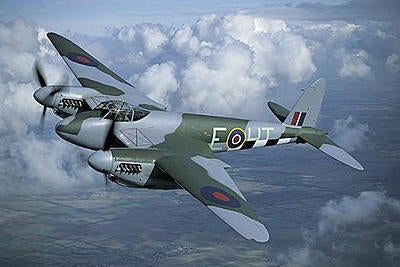
And that was not the only “secret” design the germans tried. There were reports of a “low observable” aircraft also made of plywood. Link below, National Geographic...
http://news.nationalgeographic.com/news/2009/06/0…
Also know as Horten 2-29, or Ho 229. Turns out that Skunkworks (the dudes that built the F-22) took the plane to their radar testing facility, and indeed, the radar signature of the “recreation” was pretty low. The plane was found disassembled and partially destroyed, abandoned in a shack deep inside Germany. Below is a reconstruction mock-up based on drawings. Pretty fascinating, for a plane also made out of wood. Below is the link to where most of the pictures were found by Google. Of course, you can read the story with a gallon of salt. And Portuguese translator at hand.
https://chicomiranda.wordpress.com/2011/05/28/hor…
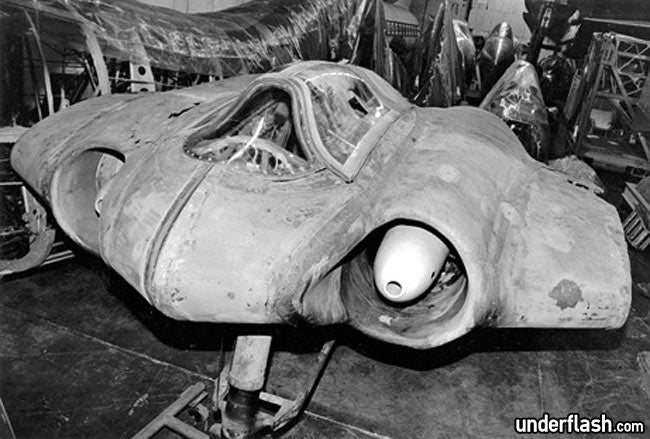
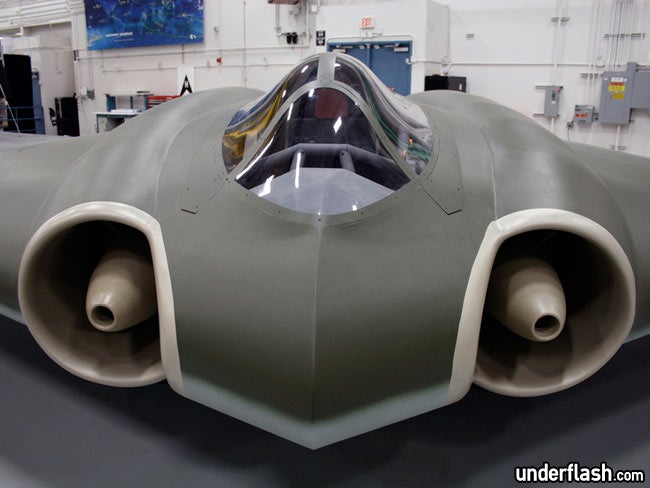
 Schnabeltier
> SteveLehto
Schnabeltier
> SteveLehto
08/24/2015 at 12:26 |
|
The big problem with these was the glue they used - when bits of your wings fall off at high speed, that doesn’t lead to particularly great performance. Also, they wanted Hitler Youth to fly the thing, despite it being a massive handful for highly experienced pilots.
 T5Killer
> SteveLehto
T5Killer
> SteveLehto
08/24/2015 at 14:37 |
|
I always liked the way the He 162 Looked. Very modern for its time. Apparently a handful to fly.
 fuscator
> X37.9XXS
fuscator
> X37.9XXS
08/24/2015 at 18:35 |
|
indeed, a revered craft, but not a jet
 fuscator
> SteveLehto
fuscator
> SteveLehto
08/24/2015 at 18:43 |
|
Germany lost the war because they did not invent duct tape....
 fuscator
> 66ChevelleSS
fuscator
> 66ChevelleSS
08/24/2015 at 18:46 |
|
gosh, how
true
!
 DSC Off
> JayHova
DSC Off
> JayHova
09/10/2015 at 09:51 |
|
Came here to post the vampire too.